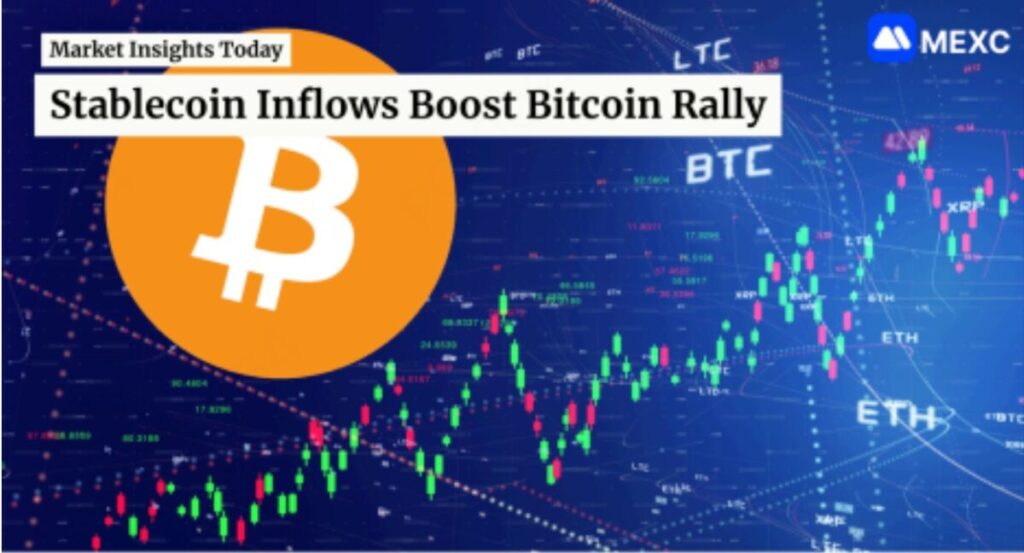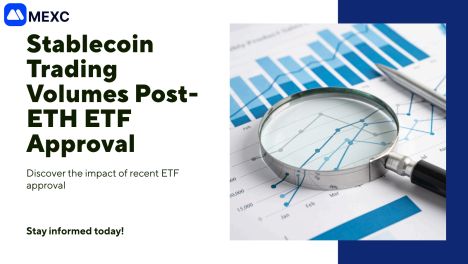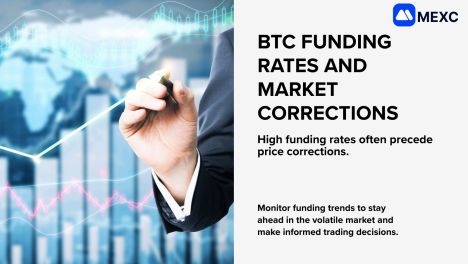
Stablecoins are no longer just the digital dollars of crypto. In 2025, they’ve become the heartbeat of the entire market, shaping liquidity, guiding investor sentiment, and influencing both spot and derivatives trading. By analyzing three core metrics stablecoin net flows, trading volumes, and funding rates investors can gain deep insights into where capital is moving and how the market is likely to behave.
From sudden inflows signaling bullish momentum to negative funding rates warning of excessive shorting, these signals provide a roadmap for navigating volatile conditions. Understanding how to read them isn’t just for analysts it’s becoming a survival skill for traders, institutions, and crypto enthusiasts.
Alt: stablecoin flows and funding rates as key trading signals
Key Highlights
● Stablecoin Net Flows: Tracks capital moving into or out of exchanges; a leading indicator of bullish or bearish positioning.
● Trading Volumes: Reflects the pulse of liquidity and market activity, often spiking around major macro or crypto events.
● Funding Rates: The compass of perpetual futures sentiment; positive means long bias, negative means short bias.
● Combined Signal Power: The trio of flows, volumes, and funding rates creates one of the most reliable market sentiment indicators.
● 2025 Shift: Non-USD stablecoins, institutional adoption, and regulatory clarity are reshaping how these metrics are interpreted.

1.What Are Stablecoin Net Flows?
Stablecoin net flows measure the movement of stablecoins onto and off exchanges. Inflows: Stablecoins moving into exchanges often signal traders preparing to buy crypto assets.
Outflows: Large amounts leaving exchanges suggest investors are transferring funds to wallets or DeFi protocols a risk-off signal.
1.1 Why Net Flows Matter
Stablecoins act as the dry powder of crypto markets. When inflows spike, it’s like traders loading their chambers before a rally. Conversely, when flows dry up, it reflects caution or profit-taking.
1.2 Real-World Example (2025)
In early 2025, Bitcoin saw a strong upward push after $1.5B in USDT inflows hit exchanges within a single week. Traders interpreted this as imminent demand and they were right. BTC rallied by 12% shortly after.
2.Trading Volumes: The Pulse of Market Activity
Trading volume is the engine of market momentum. Stablecoin volumes specifically highlight how much liquidity is flowing through the system.
2.1 Why Volumes Are Important
High volumes: Indicate strong conviction, active speculation, and high liquidity. Low volumes: Reflect hesitation, thin order books, and greater vulnerability to volatility.
2.2 Case Study: Macro Events and Volumes
When the U.S. SEC approved the first ETH spot ETF in 2025, stablecoin volumes surged by nearly 40% across exchanges. This reflected heightened trading activity as institutions and retail participants positioned around the event.
2.3 Reading Between the Lines
Volume alone isn’t enough. A volume spike with inflows can signal bullish positioning, but a spike during outflows might mean panic selling.
3.Funding Rates: The Sentiment Compass of Derivatives
Funding rates are the heartbeat of perpetual futures markets, balancing long and short positions.
3.1 How Funding Rates Work
Positive funding: Longs pay shorts → traders are leaning bullish.
Negative funding: Shorts pay longs → traders are leaning bearish.
3.2 Why They Matter
Funding rates reveal not just price action, but trader bias. They show whether sentiment is overheated or overly fearful.
3.3 Example: Overheated Market
In March 2025, Bitcoin funding rates spiked to +0.15% per 8 hours, while stablecoin inflows surged. This indicated excessive long positioning. Within days, BTC corrected 8%, proving the market had become overextended.

4.Connecting the Trio: Flows, Volumes, and Funding Rates Together
Looking at these indicators in isolation is risky. But together, they form a sentiment radar. 4.1 Bullish Scenario
● Stablecoin inflows
● Trading volumes
● Funding rates positive but moderate
● Likely outcome: sustained rally.
4.2 Bearish Scenario
● Stablecoin outflows
● Trading volumes
● Funding rates negative
Likely outcome: extended sell-off or consolidation.
4.3 Overheated Scenario
● Stablecoin inflows
● Trading volumes
Funding rates extremely positive
Likely outcome: short-term rally followed by correction.
5.Why 2025 Is Different: The Evolution of Stablecoin Signals
Stablecoin analysis has evolved significantly compared to past cycles.
5.1 Rise of Non-USD Stablecoins
More exchanges now support EUR, JPY, and even BRL stablecoins, reducing dependence on USD-pegged assets. This diversification is reshaping flow analysis.
5.2 Institutional Adoption
Institutions now track these metrics systematically, integrating them into quant strategies and risk models. What used to be a retail only edge is now part of Wall Street’s playbook.
5.3 Regulatory Clarity
With clearer frameworks in the U.S., EU, and Asia, stablecoin transparency has improved, making volume and flow data more reliable than ever.
Conclusion:
Turning Stablecoin Data Into Alpha
Stablecoin net flows, trading volumes, and funding rates aren’t just statistics they’re the heartbeat of the crypto market in 2025.
Net flows show where capital is moving.
Volumes reveal how intensely markets are trading.
Funding rates expose hidden trader bias.
Together, they form a trader’s compass for navigating volatile markets.
At MEXC, we believe data-driven trading is the future. By monitoring these signals, investors can position themselves ahead of trends instead of reacting late.
Disclaimer: This content is for educational and reference purposes only and does not constitute any investment advice. Digital asset investments carry high risk. Please evaluate carefully and assume full responsibility for your own decisions.
Join MEXC and Get up to $10,000 Bonus!



